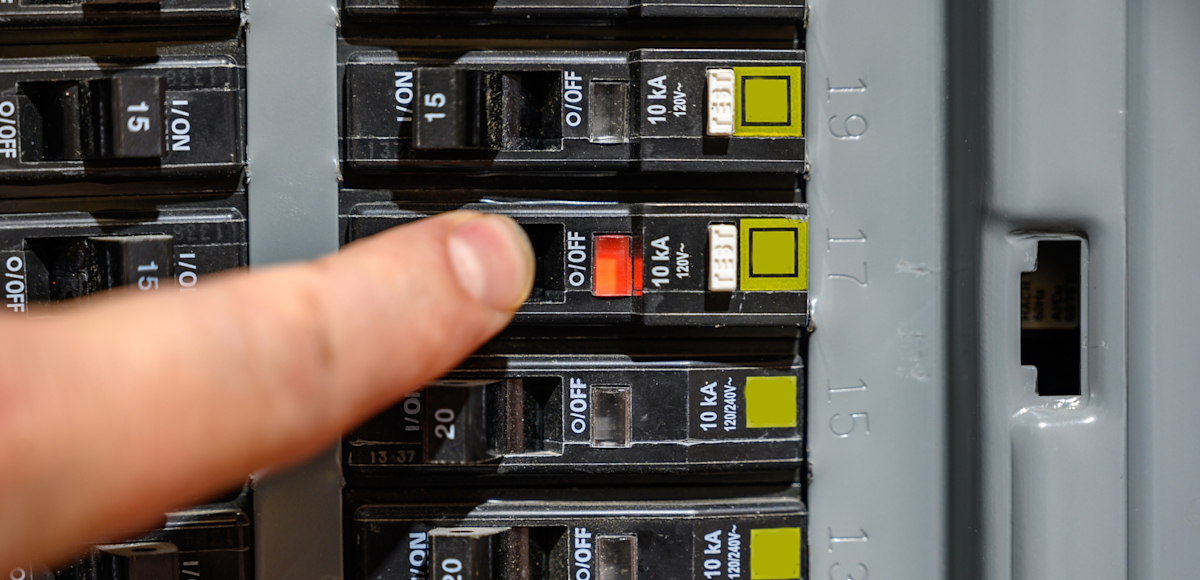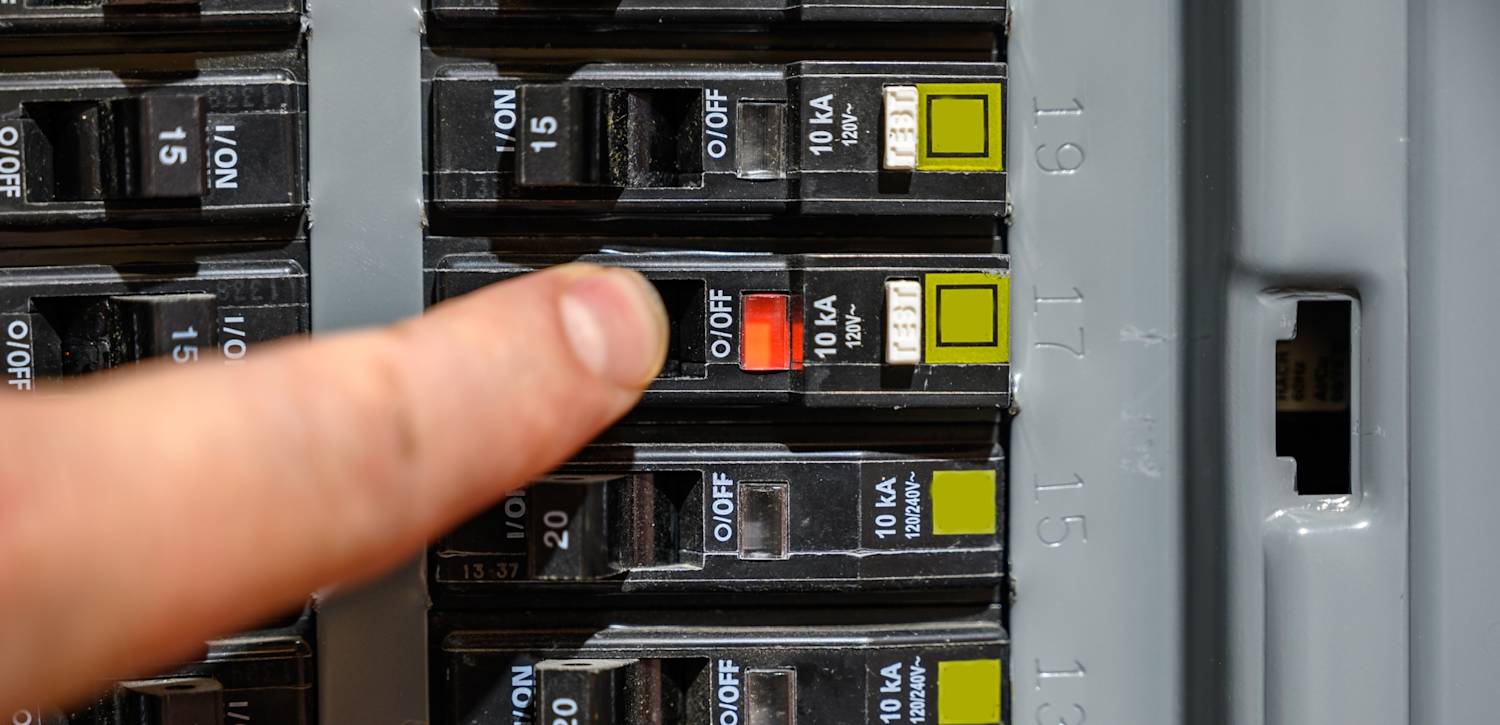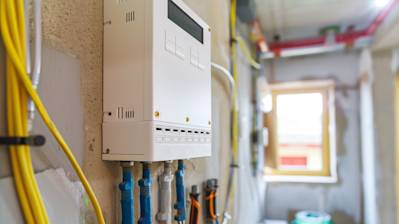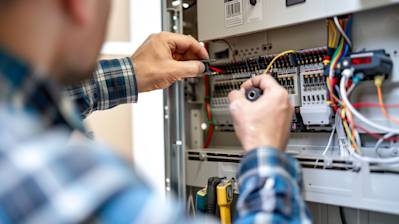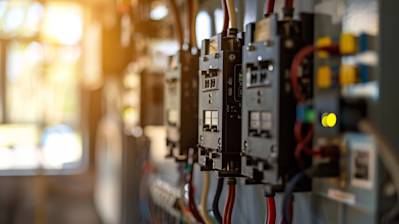At one point or another, any homeowner may encounter a tripped circuit breaker, leading to no electricity in parts of their home. Although seeming like a nuisance, circuit breakers play a critical role in maintaining the safety of our homes. This comprehensive guide will walk you through the intricacies of a tripped circuit breaker, including why it trips, how to reset it, and prevention tips.
What is a Circuit Breaker?
Simply put, a circuit breaker is a built-in safety device designed to protect your home or office's electrical circuit. A key player in our home's safety, a circuit breaker automatically interrupts the flow of electricity if it detects a fault.
The Whys and Hows of a Tripped Circuit Breaker
Understanding the rationale for a tripped circuit breaker is essential to managing the situation maturely.
Overloading: The most common cause of a tripped circuit breaker is circuit overload. Essentially, when too many appliances or devices draw power simultaneously from one circuit, the breaker trips to prevent overheating and consequent fire risks.
Short Circuits: A more serious issue is a short circuit, generally caused by wiring issues that lead to the circuit receiving more electricity than it can handle.
Ground Fault Surges: When the hot wire (black) carrying current comes in contact with a ground wire (bare copper or white), a lot of electricity flows, causing the circuit breaker to trip.
How to Reset a Tripped Circuit Breaker
Resetting a tripped circuit breaker isn't overly complicated. However, it's crucial to go about it the right way.
- Identify the Tripped Breaker: A tripped breaker usually occupies a middle position between 'ON' and 'OFF.' The OFF position is generally away from the center of the panel, while the ON position is towards it.
- Turn the Breaker Off: Push the switch entirely to the OFF position.
- Reset to the 'ON' Position: Next, switch it back to the 'ON' position.
- Check for Power Restoration: Lastly, go back to where you first noticed the lack of power and check to see if the electricity has been restored.
The Art of Preventing Frequent Circuit Breaker Trips
While circuit breakers are designed to protect us, frequent breaker trips can signify a more serious problem. Here, prevention is better than cure and can be achieved through various means.
Distribute Electrical Load Evenly
Efficient distribution of the electrical load across various circuits in your home can help keep the circuit breaker from overloading and tripping.
Invest in High-Quality Appliances
Cheap, low-grade appliances tend to short circuit more often, compelling the breaker to trip. Thus, invest in reliable, high-quality appliances which adhere to the utmost safety guidelines.
Schedule Regular Inspections
Regular inspections of your electrical systems can help you identify any potential risks or problems in the initial stages. It always pays to have a professional electrician check for possible hazards.
Watch out for Warning Signs
- Flickering lights
- Burning odor from outlets
- Overheated wires and cords
Identifying and responding to these signs can help prevent a circuit breaker from tripping frequently.
Frequently Asked Questions about Tripped Circuit Breaker
What are the Dangers of a Tripped Circuit Breaker?
A tripped circuit breaker is often more than just an inconvenience, it's a safety mechanism. It protects your electrical system from overheating or causing an electrical fire. However, if your circuit breaker keeps tripping, it could be a sign of a serious electrical issue that requires professional attention. Moreover, repeatedly resetting the breaker without addressing the issue can potentially lead to a fire.
How Can I Reset a Tripped Circuit Breaker?
Resetting a tripped breaker is typically straightforward. First, you'll need to find your electrical panel, usually located in a basement, garage, or utility closet. Inside, you'll see a bunch of switches. Locate the one in the mid position — this is the tripped breaker. Turn it off (towards the "off" position), then flip it back on (towards the "on" position). If done correctly, power should be restored.
Why Does my Circuit Breaker Keep Tripping?
If your circuit breaker keeps tripping, it could be due to several reasons. The first, and most common, is an overloaded circuit. Having too many appliances plugged in and running simultaneously can overload the circuit, causing it to trip. Alternatively, there could also be a short circuit or a ground fault. Persistent tripping could also be due to a worn-out or faulty breaker. In such cases, you should contact an electrician.
How Do I Prevent my Circuit Breaker from Tripping?
Preventing your circuit breaker from tripping starts by not overloading your circuits. Avoid using multiple high-wattage appliances simultaneously on the same circuit. If a certain circuit continues tripping, it might be worth investigating what devices are connected to it and how they are used. Additionally, regularly checking for and promptly repairing wiring issues can prevent breakers from tripping because of short circuits or ground faults.
How to Identify the Cause of a Continual Tripping Circuit Breaker?
Identifying the cause of a continually tripping circuit breaker can be a process of elimination. Start by unplugging all appliances on the affected circuit, then reset the breaker. Gradually plug in and switch on the appliances one by one until the breaker trips again. The last device you turned on is likely causing the problem. However, if it continues to trip even when nothing is plugged in, then there might be a problem with the wiring or the breaker itself.
Pros of a Tripped Circuit Breaker
Safety Mechanism
Protects Against Circuit Overload
A critical advantage of a tripped circuit breaker is that it provides an essential safety mechanism against circuit overload. The trip function cuts off the electricity supply if it detects a higher current than the circuit can handle. This interruption prevents the possibility of electrical faults, fires, or equipment damages due to an overload.
Prevents Electrical Shock
A tripped circuit breaker also plays an essential role in preventing electrical shocks. It does so by disconnecting the circuit whenever it senses a short circuit or a ground fault. A ground fault happens when live electrical wires touch the grounded parts (usually metal) of a fixture or appliance which may result in an electrical shock.
Straightforward to Reset
Resetting a tripped circuit breaker is typically a straightforward process and doesn't require professional intervention. You only need to locate your electrical panel, find the tripped breaker (usually in the off or middle position), and flip it back to the on position.
Cost Saving
The feature of resetting a tripped circuit breaker without needing professional help can save you from unnecessary expenses. Not needing a technician every time means fewer service charges and maintenance costs. It minimizes outage times and hence reduces losses, especially in commercial and industrial applications.
Cons of a Tripped Circuit Breaker
Frequent Tripping
One of the main downsides of circuit breakers is that they can trip frequently. If the breaker trips often, it could be an indication of serious electrical problems like short circuits or ground faults. Frequent tripping can interrupt daily activities frequently and may cause frustration.
False Tripping
Circuit breakers can sometimes trip even when there is no danger, causing unnecessary interruptions. Factors such as a loosely-connected breaker or moisture can lead to "nuisance tripping." These false alarms can create inconvenience and might require a professional to investigate and solve the issue.
Difficulty Identifying Tripped Breaker
In some cases, identifying a tripped breaker in the electrical panel might be difficult, especially when the breaker doesn't move completely to the "off" position. It may require trial and error to figure out which breaker has tripped, which can be time-consuming and frustrating.
Potential for Large-scale Disruptions
A tripped main breaker brings the entire electrical system to a halt since it shuts off power to all the circuits it feeds. This disruption can bring entire businesses, factories, or households to a standstill until the issue is resolved.
Possibility of Breaker Failure
Like other electrical components, circuit breakers have a lifecycle and can eventually fail even when properly maintained. A failed breaker can either refuse to trip when it should, posing a serious safety risk, or it can trip constantly, causing unnecessary power loss. Either case would require replacement, which brings additional costs and inconvenience.
Expensive to Replace
While individual circuit breakers can be affordable, replacing an entire panel can be quite expensive. Particularly, services that involve electricians can be costly. Thus, despite the benefits of circuit breakers, their potential replacement cost is a definite downside if you end up needing a new panel.
Summary
So, a tripped circuit breaker is actually your home's best defense against electrical overloads or short circuits. It's a device designed to keep you and your electronics safe. When a breaker trips, it means it's doing its job—protecting your home from potential electric issues. Therefore, even if it's inconvenient at times, it's a sign that your electrical system is working correctly.
Dealing with a tripped circuit breaker, on the other hand, doesn't have to be too much of a headache. First of all, don't panic. Believe it or not, it's something you can usually handle on your own without the need for professional help. Whether it's identifying the source of the problem, resetting the breaker, or addressing a repeated issue, a little knowledge can go a long way. Just ensure you follow safety procedures, and when in doubt, call an expert.
On that note, it's really important to remember that a tripped circuit breaker is not a nuisance; it's a warning. If it's happening frequently, there might be an underlying issue. Unresolved electrical problems can be a fire hazard, so don’t ignore it. Frequent tripping can mean something as simple as needing to redistribute your appliances to different circuits, but it could also be an indicator of something more serious. When in doubt, it's always best to consult with a professional electrician. Don't risk your safety just to avoid a potential service call.
About Sagan Electric
Sagan Electric, based out of sunny Sacramento, CA, is your go-to spot for all things electrical. With an unrivaled commitment to quality workmanship and customer satisfaction, we've been serving the local community for years, winning hearts and light switches alike. Our team of experts brings professionalism, warmth, and a knack for problem-solving at every replace, repair, and installation job. So, whether you’re looking to upgrade your modern home with smart lighting or to troubleshoot a pesky circuit, you can trust us to do the job right. We can't wait to brighten your day with our electrical services!
Tags: electricity, power outage, home maintenance,

